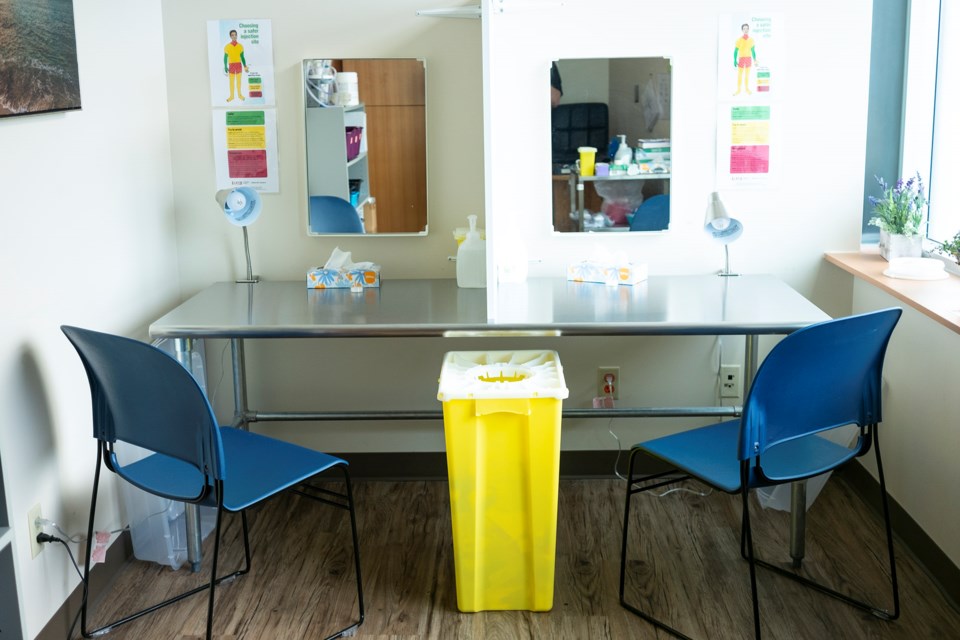As some communities across Ontario are still working toward opening a safe injection site, Guelph’s Consumption and Treatment Services is doubling in size thanks to recent funding from the provincial government.
The downtown Consumption and Treatment Services (CTS) site currently has two booths set up for people to use drugs in a supervised environment but will soon double that number to four after receiving over $300,000 from the provincial government to expand, said Raechelle Devereaux, executive director of the Guelph Community Health Centre.
The CTS currently sees an average of 30 visits per day and Devereaux said the expansion will decrease the number of times people have to be turned away from the service.
The expansion will also include some changes to enhance privacy for the people using the site and treatment sinks and foot care services will be added to the space.
“All of those changes have been directly driven by client feedback,” said Devereaux.
Consumption and Treatment Services, formerly known as the overdose prevention site (OPS), opened in April 2018 at the Guelph Community Health Centre, in partnership with the Guelph Family Health Team and HIV/AIDS Resources and Community Health (ARCH). It took over a small office that previously housed the centre’s volunteer services office.
In operation for almost two years, Devereaux said data collected and feedback from clients was used to apply for the funding from the Ministry of Health Capital Branch.
In January, the site received a three-year extension to the legal exemption from the federal government, which will allow it to operate until January of 2023.
The funding to actually operate the site is dependant on the provincial government. In March of 2019 the Ontario PC government approved the Guelph OPS to operate as one of the province’s first Consumption and Treatment Services sites.
When the Ontario PC government approved the first 15 CTS sites it also announced it was requiring organizations to offer connections to health and social services, including primary care and mental health support.
Devereaux said highlighting available treatment services was always a part of the intention for the site from the beginning.
“This is an effective mechanism for saving lives in our community, but it is not the only mechanism and we need multi-pronged strategies in order to come at this very complex issue,” said Devereaux. “That includes naloxone distribution programs, targeted communications strategies and supports for different demographics that are using.”
The Health Alert program, which offers real-time alerts to the public when contaminated substances and abnormal overdose patterns occur in the community, has also been effective, said Devereaux.
An alert about dangerous purple fentanyl and a higher-than-usual number of overdoses in the community can result in more people coming to the CTS site to use in a supervised environment.
“When we are putting out those health alerts we are grateful to see those spikes to visits to the site,” said Devereaux.
The provincial funding did not come with and end date, but Devereaux said she has confidence — based on the receiving of the capital funding for the expansion — that the funding is ongoing, at least for the time being.
Devereaux said the CTS has also recently increased its hours to be open from 9 a.m. to 4:30 p.m. seven days a week.
“We began opening earlier prior to Christmas in response to client request for earlier morning hours,” she said.
Devereaux said Guelph’s CTS has been transparent in sharing information with neighbouring communities that are also working to develop similar sites, including Brantford, Cambridge, Barrie, North Bay and Coburg.
“They have all come to learn about our journey and to just learn from our experiences. We are always sharing resources and policies and processes that have helped us to advance this program in the community,” she said.
